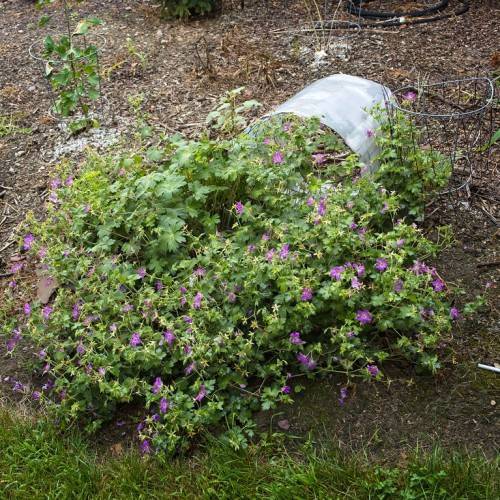
hardy geranium
Geranium cinereum 'Janette'
Cycle:
Herbaceous Perennial
Watering:
Frequent
Hardiness Zone:
5 - 7
Flowers:
Flowers In Spring
Sun:
Full sun, Part sun/part shade
Soil:
Rocky , gravelly , dry, Well-drained
Fruits:
Fruits In Autumn Ready In
Leaf:
Yes
Growth Rate:
Moderate
Maintenance:
Moderate
Salt Tolerant:
Yes
Care Level:
Medium
watering
Hardy geraniums should be watered regularly and deeply, at least once a week or more depending on the surrounding weather and location. For areas with significantly dry conditions, geraniums should be watered twice a week, and in wetter climates or winter months, this may be reduced. For newly planted or recently transplanted hardy geraniums, increase the frequency of watering until the geranium has established itself and adjusted to its new location. In hot dry areas, watering twice a day may be necessary.
sunlight
Hardy geraniums, also known as Geranium cinereum 'Janette', require sunlight for optimal growth and blooming. This plant species prefers full sun to partial shade – approximately 6-8 hours of bright sunlight each day – to maintain their beautiful leaves, vibrant colors and extended flowering period. Keep in mind that, while sunlight is important for hardy geraniums, if exposed for too long in direct, unrelenting sunlight, their foliage can become scorched and the colors of their flowers will become faded. Finally, if possible, try to keep this plant species in slightly filtered light during the hottest parts of the day (usually 11am – 3pm).
pruning
Pruning for Hardy geranium is best done in late spring after the plant has finished flowering or just before new growth starts emerging. To promote a denser and more vibrant growth habit, prune the plant back by about 1-third of its size. If needed, you can also thin out some of the shoots and remove dead or damaged leaves as needed. Pruning also helps to encourage repeated blooming throughout the summer. In late summer, remove any remaining dead or damaged leaves and spent flower stems. Doing this will stimulate new growth in time for winter.
